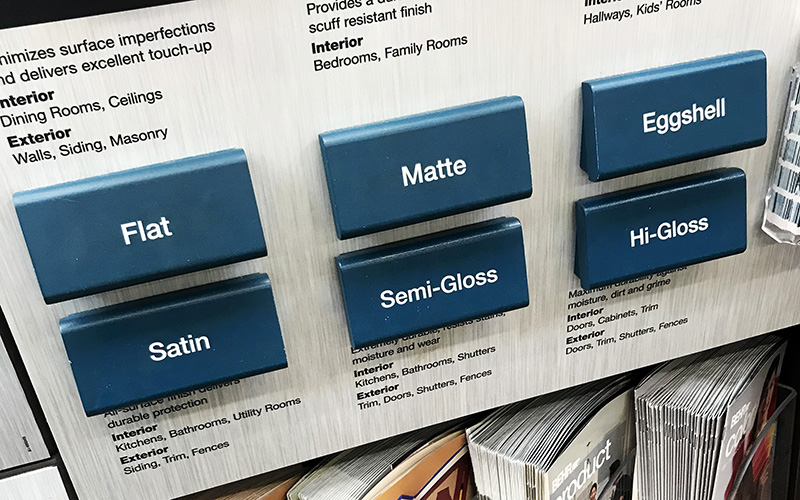When it comes to painting your walls or furniture, selecting the right type of paint finish can make a world of difference in achieving your desired aesthetic. Two common options that often lead to confusion are matte and flat finishes. While they may sound similar, these two paint finishes have distinct characteristics and serve different purposes. In this blog post, we’ll delve into the differences between matte and flat paints, helping you make an informed decision for your next painting project.
Matte Paint: A Velvety Elegance
Matte paint is renowned for its soft, velvety appearance. It lacks the sheen or gloss found in other finishes like satin, semi-gloss, or high-gloss. This makes it an excellent choice for spaces where you want to create a subtle, sophisticated look.
Characteristics of Matte Paint:
- Minimal Sheen: Matte paints have very little to no shine, resulting in a non-reflective surface. This helps to hide imperfections and inconsistencies on the wall.
- Conceals Flaws: Matte finishes are great for covering up minor wall imperfections, such as bumps, dents, and hairline cracks. This makes them an excellent choice for older homes or walls with less-than-perfect surfaces.
- Subdued Appearance: Matte paint creates a calming, muted atmosphere. It’s ideal for bedrooms, living rooms, and other spaces where you want to foster a sense of relaxation and tranquility.
- Limited Durability: While matte paint provides an elegant look, it can be less durable than other finishes. It is more susceptible to scuffs and stains, which can be challenging to clean without damaging the paint.
Flat Paint: Ultra-Matte, Ultra-Challenging
Flat paint takes matte to the next level. It is the most matte finish you can find, giving your walls an ultra-flat, non-reflective appearance. However, this finish comes with its own set of pros and cons.
Characteristics of Flat Paint:
- No Sheen: Like matte paint, flat paint is entirely non-reflective, creating a beautifully matte surface.
- Camouflages Imperfections: Flat paint is excellent at hiding wall imperfections, making it a solid choice for textured or damaged surfaces.
- Exceptional for Ceilings: One of the best uses for flat paint is on ceilings. Its ability to conceal imperfections and create a uniform, glare-free surface makes it perfect for this application.
- Susceptible to Stains: The downside of flat paint is that it’s highly porous, making it more susceptible to stains and damage. Cleaning flat-painted walls can be a challenge without compromising the paint’s integrity.
Choosing Between Matte and Flat
The choice between matte and flat paint largely depends on your preferences, the specific room you’re painting, and the level of maintenance you’re willing to undertake.
Matte paint is ideal for:
- Living rooms
- Bedrooms
- Hallways
- Areas with less traffic and exposure to moisture or stains
Flat paint is ideal for:
- Ceilings
- Low-traffic areas
- Spaces with textured or imperfect walls
Conclusion
Matte and flat paints offer distinct finishes, each with its unique qualities and suitability for different spaces. While they share the absence of sheen, matte paints offer a bit more durability compared to flat paints. When selecting between these two finishes, consider the location, the amount of traffic the area receives, and your willingness to perform regular maintenance. By making an informed choice, you can ensure that your painting project achieves the desired look and functionality. Whether you opt for matte or flat paint, both can contribute to a beautiful, serene, and stylish environment in your home.
